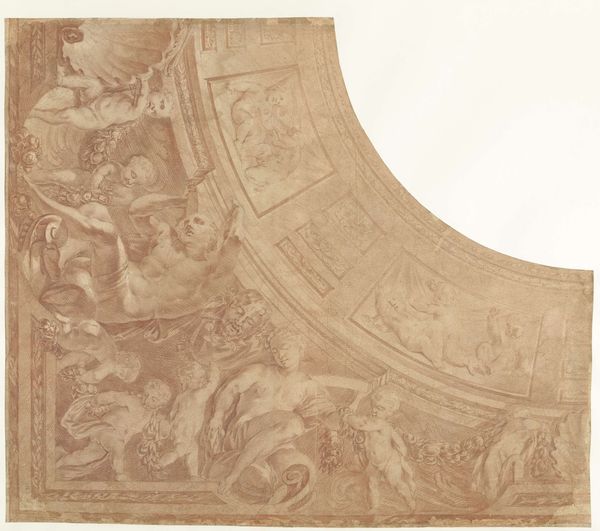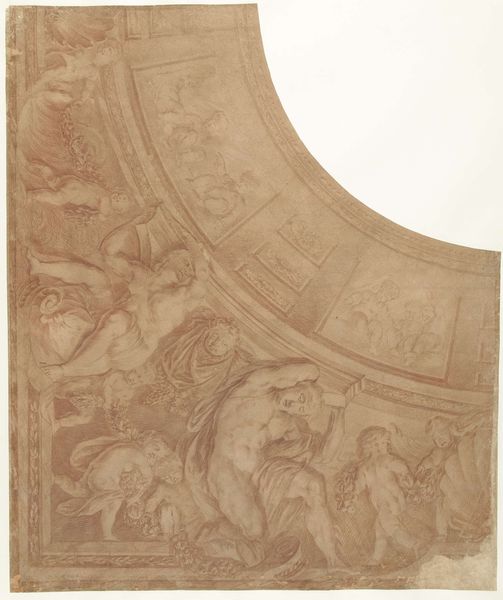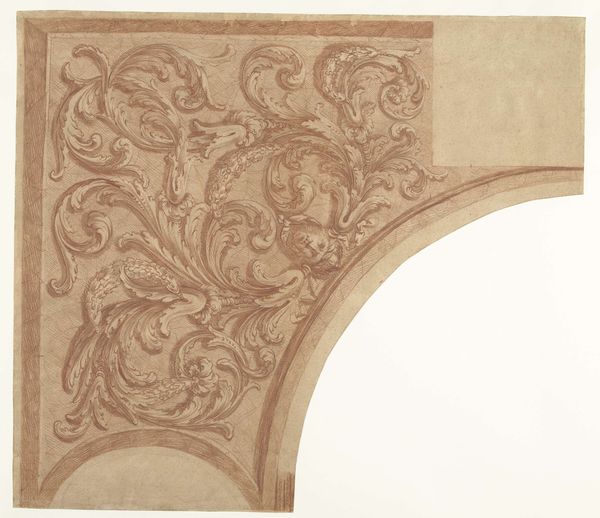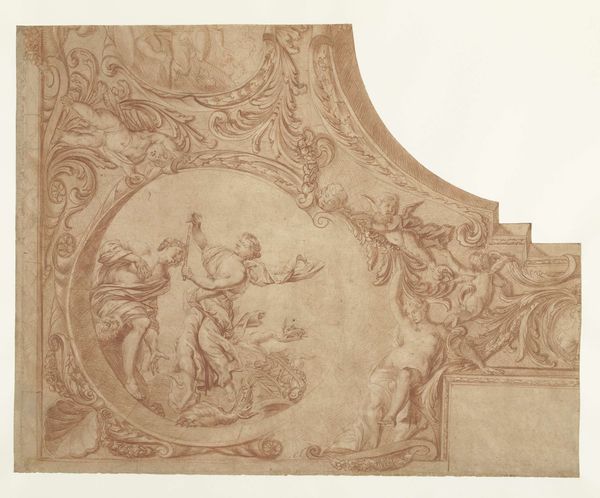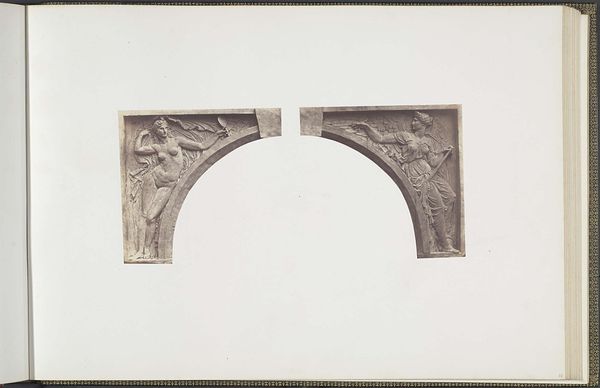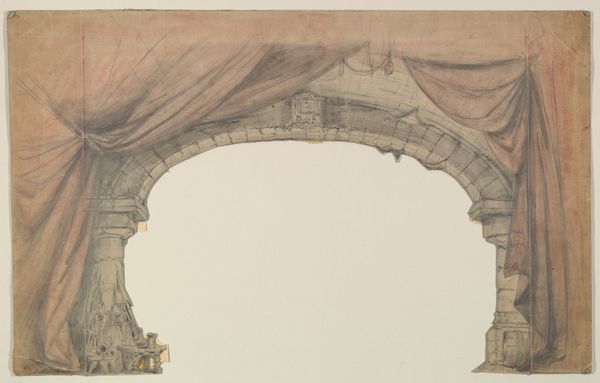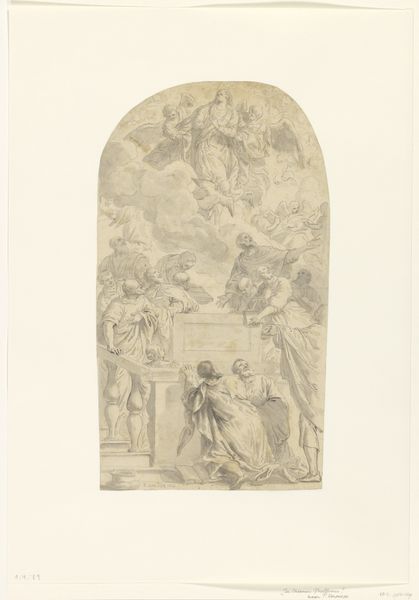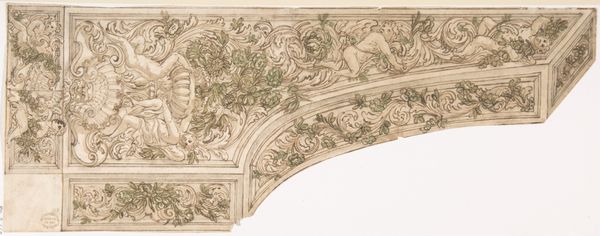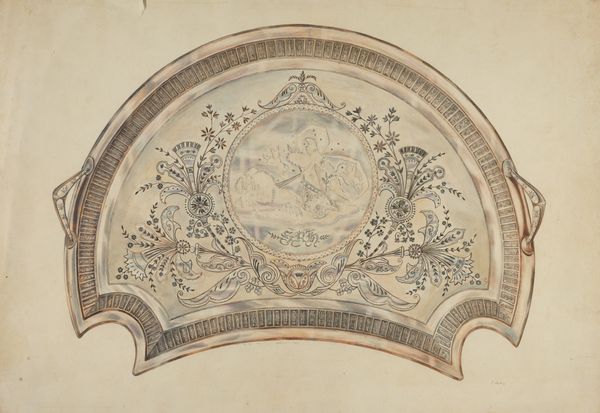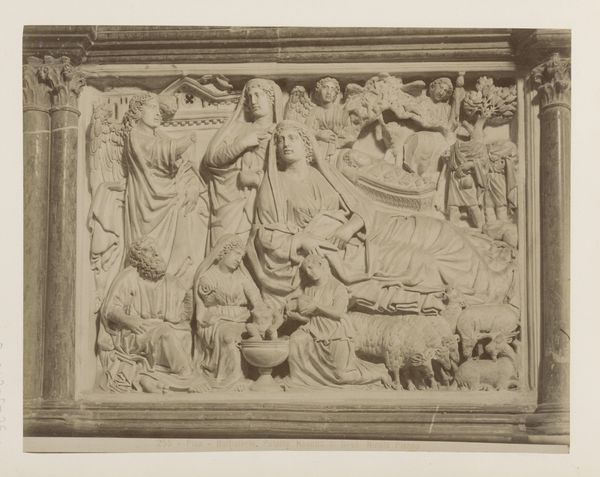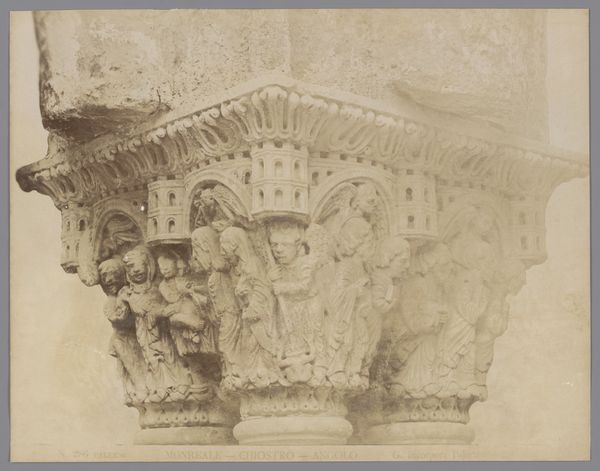
Ontwerp voor een hoekstuk van een plafond met zittende figuren, putti en buste van een sater 1680 - 1757
0:00
0:00
drawing, sculpture, charcoal
#
drawing
#
baroque
#
sculpture
#
charcoal drawing
#
figuration
#
charcoal art
#
sculpture
#
charcoal
#
history-painting
#
charcoal
Dimensions: height 626 mm, width 509 mm
Copyright: Rijks Museum: Open Domain
This is Mattheus Terwesten's design for a ceiling corner piece, featuring seated figures, putti, and a satyr bust. Terwesten, born in The Hague in 1670, lived in a Dutch Republic undergoing significant cultural and political shifts. The drawing reflects the era's fascination with classical antiquity, yet it's also imbued with the sensibilities of the Dutch Golden Age. The satyr, a symbol often associated with revelry and the wild, exists alongside the putti, angelic figures representing innocence and purity. It's a dichotomy that speaks to the complex moral and social landscape of the time, where hedonistic desires existed alongside strict Calvinist values. Terwesten’s choice to include both mythological and cherubic figures suggests a negotiation between earthly pleasures and divine aspirations. It highlights how art could function as a site of reconciliation. Consider how these images, designed for a ceiling, would have framed the lives and experiences of those moving beneath them.
Comments
No comments
Be the first to comment and join the conversation on the ultimate creative platform.
